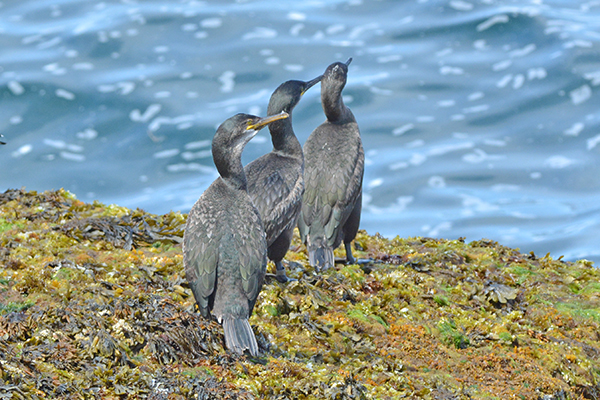I recently went to Puffin Island with SCAN and the Seabird Ecology Group of Liverpool University. No ringing for me this trip as my main task was to try and photograph as many Razorbill rings for our long term study on adult survival rates. Photographing the rings is more accurate than recording numbers in a notebook as they can then be verified on the computer screen later.
See here for last years report.
It was a beautiful day and I managed a good number of leg and ring shots of Razorbills. Photography was a bit challenging as the sun was reflecting off the rings at certain angles but between Steve & I we probably managed 60-70 different ring combinations.
As usual I couldn't resist a few 'artistic' shots when the circumstances allowed.
One of the more recent avian features along the N Wales coast has been the increase in Eider numbers and Puffin Island hosts a population of around 40 of these sea ducks with the majority spending their time loafing around the beach area! The increase here correlates with an increased number of sightings off Hilbre
Greater-black Backed Gulls nest on the island and are pretty aggressive towards anyone getting to close to their nesting site. Luckily I was wearing a hat as I got hit several times by birds dive bombing and making contact.
Guillemots are the commonest breeding auk and there are a few Bridled Guillemots which is a form of Guillemot that gets commoner the further north you go. Here they are very scarce.
Herring Gulls also breed on the island but aren't as aggressive as their bigger cousins.
This unfortunate Herring Gull has a massive tick infestation around its face
Kittiwakes are also part of a long term study and are colour ringed as adults. Hers AXJ at its nest site.
Puffins have increased in numbers since rats were eradicated from the island although there aren't huge numbers. They're probably the most photographed seabird on the planet but who can resist.......I can't!
Razorbill!
Adult Shag drying in the sunshine
Sub-adult Shags. Non breeding birds born last year (Euring 5) showing the worn pointed feathers on their backs and duller eyes.
The next trips coming up very soon!
5 Jun 2017
Subscribe to:
Post Comments
(
Atom
)



















































































No comments :
Post a Comment